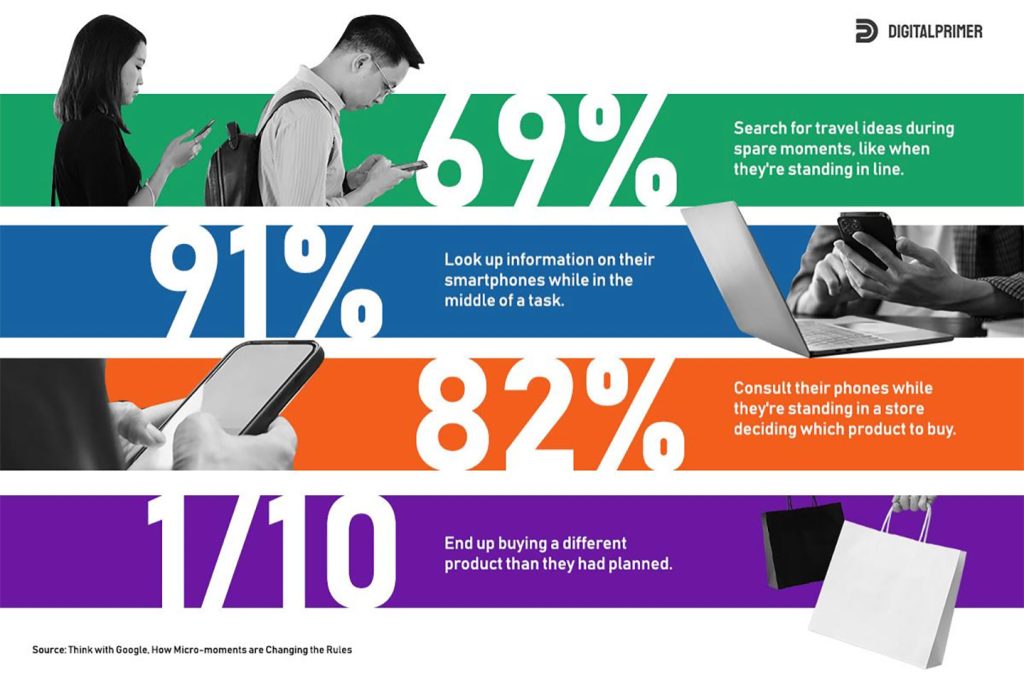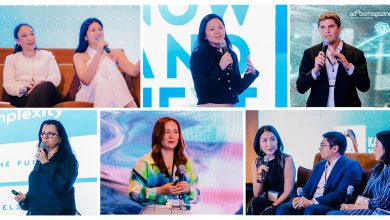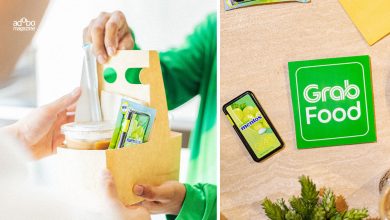MANILA, PHILIPPINES — Digital marketing is a constantly evolving playground that brands, despite its complexity and unpredictable transformations, have no choice but to learn, understand, and utilize according to their needs. As the digital age continues to warp and shift into different spaces, requiring unique strategies, there is an even greater urgency among brands to enter the space, and capture their audiences before things start to change again. With this, adobo Magazine has tapped digital marketing expert Ibarra Villaseran, Client Service Director of Truelogic, on a new column dedicated to giving brands, marketers, and advertisers the basics of digital, and then some: “Digital Primer.”
In this second installment, Ibarra reflects on the “micro-moments” that make up our day, and, when known how to use properly, can bolster SEO strategies for businesses and brands.
I enjoy a cup of coffee every morning. It just sets the day right. In recent years, however, I’ve noticed that as I’m sitting down and savoring the first sip of the day, I suddenly feel this irresistible urge to pick up my phone and see what’s happening in the world. Does that happen with you as well?
Now, between enjoying my coffee and the need to head out to face morning traffic, I’m giving barely 50% of my attention to what I’m doing on the phone. I’m practically just skimming through pages. At this state, I probably won’t scroll down in Google and will not go to page two of the search results. And if I click on a link and it takes more than two minutes for the website to load, I’d probably rather put my phone down and go back to my coffee.

The day is peppered with a lot of these fragmented interactions called “micro-moments.” It could be while standing in line for the UV Express, waiting for the elevator to arrive, or even while eating in a restaurant.
The takeaway here is that it highlights the importance of being present when there is Intent.
In this increasingly mobile environment, if you’re not within the top results when your audiences search, it will be as if you don’t exist because they will likely not see you. In a separate podcast, we delved into the concept of the power of intent and its relevance in our online experiences.
Google further defines micro-moments into these key lookouts: I want to know moments, I want to go moments, I want to do moments, and I want to buy moments. Let’s go over some quick statistics to highlight these:

I want to know moments: These instances represent the thirst for knowledge and information, and businesses that can provide relevant and timely answers to users’ queries can establish themselves as trusted authorities in their respective domains.
I want to go moments: Whether it’s finding nearby restaurants, navigating to a new location, or seeking local businesses, users often turn to their smartphones to fulfill their immediate needs. Being present in these moments can help businesses attract foot traffic and foster a deeper connection with potential customers.
I want to do moments: These moments represent the stage where users are actively considering and planning to take action. Whether it’s learning how to do something new or seeking guidance on complex tasks, users often turn to their smartphones to find solutions.
I want to buy moments: These critical moments offer businesses a chance to influence purchase decisions, showcase competitive advantages, and convert potential customers into loyal brand advocates.
For businesses, embracing these micro-moments is no longer an option but a necessity.
Yoj Vestudio, a senior manager for Web & Digital UX at a leading banking and finance organization in the Philippines, shared a practical example that vividly illustrates the power of understanding user context in the world of micro-moments. She recounted the experience of designing a mobile app, particularly focusing on how they presented mobile data to users.
“At the time, the way that we displayed mobile data is by simply displaying how much data you have already spent,” she explained. It was a common approach: users were informed about how much of their data allocation they had used up, such as “2MB out of 20MB.” However, Yoj and her team decided to take a closer look at user preferences through interviews and feedback from actual customers.
What they discovered was enlightening. “So they would, especially during that time when mobile data was relatively expensive, tend to want to know how much is left,” she shared. In a world where Filipinos were avid users of social media platforms like Facebook and various data-hungry applications, knowing how much data remained was of paramount importance. This insight led to a critical decision to revamp their approach to displaying mobile data.
By understanding the context and needs of their users, they redesigned the app to prominently feature how much data was left. This simple yet significant change transformed the user experience. Yoj explained, “And that simple move changes their perception of the app from ‘okay’ to ‘it’s useful.’ Now it’s contextual. Now, to the user, it’s much more useful.” In essence, this adjustment allowed the app to connect better with users, turning a potentially mundane interaction into a valuable micro-moment.
For Princeton Tan, General Manager of the PetCare Division for Consumer Care Products Inc., these micro-moments became crucial, especially during the pandemic.
In the initial stages of the crisis, pet owners were flooded with concerns. With vet clinics and pet shops closed, the pressing issue on their minds was: “What do I feed my pets?” It was a panic-induced moment, and Consumer Care recognized the importance of being present and relevant during these micro-moments.
One of the key aspects of Consumer Care’s success was its commitment to enabling operational agility. The transformation of their business wasn’t solely confined to the digital realm. It was about mobilizing their logistics, navigating bureaucratic hurdles, and providing stay-in accommodations for their essential workers.
During those critical moments, Consumer Care turned to various digital tools, including Zoom, Google Meets, and Viber Group Calls, to coordinate operations across regions. The company expanded its reach beyond Luzon, venturing into Visayas and Mindanao, thereby ensuring that pet owners across the nation had access to essential pet care products.
“So the first thing that came to mind was how do you mobilize? But that was when we found out a lot of the pet shops, the vets were not entertaining much because, of course, everyone was worried about their health and exposure. So for those who did, we tried to help them out with how… we went through with them. At that time, we only had two trucks,” Princeton Tan said.
In the backdrop of this digital transformation journey were the unsung heroes – the essential workers who braved the odds to ensure that pets were fed, cared for, and loved. Consumer Care’s ability to understand the needs of pet owners during micro-moments, rapidly adapt to the digital landscape, and respond operationally was a testament to its resilience and customer-centric approach.
Indeed, the digital era has brought about an influx of micro-moments, and in these instances, businesses have a short window to make a connection, provide answers, and meet customers’ needs. However, developing a deeper understanding of customer behavior and preferences can enable businesses to tailor their strategies to cater to these fleeting yet impactful moments effectively.
If purposeful action toward Search Engine Optimization is begun now, taking part in all these good things will only be a matter of time.
ABOUT THE AUTHOR

Ibarra Villaseran
Truelogic, Client Service Director
Ibarra Villaseran has been at the helm of Truelogic since 2018 and has overseen the Digital Agency’s exponential growth. With over 2 decades in Marketing Communications, his favorite roles remain to be: husband, father, and friend.








